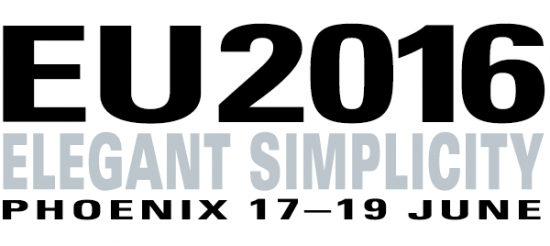SPEAKER LIST
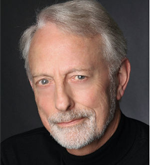
WALLACE THORNHILL
Keynote Address: The Elegant Simplicity of the Electric Universe
The Electric Universe is simple to understand—simple enough to begin teaching it in primary school, according to Wal Thornhill. In his Keynote presentation at EU2016, Wal will apply “the test of simplicity” to popular ideas in astronomy. How well do these ideas fare by comparison to the Electric Universe paradigm? Progress in science and human understanding can be investigated through the brain’s response to new perspectives. The brain is hard wired in favor of prior ideas. It will not readily accept contrary evidence and will tend to sideline it. Growing specialization can only reinforce the preexisting disadvantage of new ideas. As the data to be assimilated continue to grow, the effect shows up as the brain’s diminished ability to see things globally. “I’ll see it when I believe it.” But Nature itself does not produce isolated fragments or contradictions. It simply invites us to consider a bigger picture. The elegant simplicity of the Electric Universe is an open invitation to step into this larger field of view.
Wallace Thornhill, the Chief Science Advisor to The Thunderbolts Project, is co-author with David Talbott of Thunderbolts of the Gods and The Electric Universe. His first peer-reviewed paper on the electrical nature of stars and supernovae was published in the IEEE Transactions on Plasma Science, Vol 35 No. 4, Special Issue on Space & Cosmic Plasmas – August 2007. In 2010 he was was awarded a gold medal by the European Telesio-Galilei Academy of Science. For his lifelong contribution to science he received the distinguished Sagnac Award from the Natural Philosophy Alliance in 2013. He has spoken at numerous international conferences, and authored or co-authored papers ranging from the Martian “blueberry” phenomenon to the “plasma focus” at the centers of galaxies. His interviews for “Space News from the Electric Universe” have been among the most popular attractions on the YouTube Thunderbolts Channel.
holoscience.com
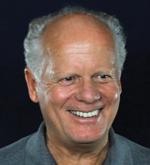
DAVID TALBOTT
Rituals of Remembering and Forgetting
It seems that an urgent and obsessive response to celestial dramas shaped every ancient culture. But from one land to another a confusion between terrestrial and celestial referents is observed, between the man-made symbols and the original celestial forms to which the symbols direct our attention. Every well-documented culture remembered the cosmic mountain of the gods. Each remembered the creator-king who stood upon that very hill. And each remembered the celestial temple, city, or kingdom fashioned upon that same mountain and serving as a model for thousands of symbolic replicas fashioned on earth. But why was this revered location of the creator-king so frequently claimed to be the unique property of the particular culture telling the story? It was this cultural claim, always linked to the localization of mythic events, that provided the ancient justification for war and conquest. By following the regional evolution of the cosmic mountain archetype over time, Dave will show how the theme progressively fragmented into competitive, localized versions of the same underlying story.
David Talbott, the founder and director of The Thunderbolts Project will give two presentations. His book The Saturn Myth (1980) helped to inspire the work of several others now joined in this collaborative project. In 1996 his work was the subject of a documentary Remembering the End of the World by Canadian filmmaker Ben Ged Low. More recently, he was the co-author with Australian physicist Wallace Thornhill, of two books, Thunderbolts of the Gods and The Electric Universe. Three episodes of his full-length documentary series Symbols of an Alien Sky have been among the most popular video presentations on the Thunderbolts Project YouTube Channel. He is currently posting the Discourses on an Alien Sky series.
www.thunderbolts.info
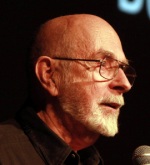
DONALD SCOTT, PhD
The Electric Solar Wind
The stream of particles radiating from the Sun is called the ‘Solar Wind’. It is observed to exhibit two different forms: the fast solar wind and the slow solar wind. In this talk, Dr. Donald Scott presents his new interpretation of the reasons why the densities and velocities of these two different ‘winds’ exist. Making use of Juergen’s Electric Sun model, he offers a clear understanding of how and why the different locations on the Sun’s surface from which each of these streams originate causes their differing properties. An electric mechanism, consistent with the ES model, is shown to be easily capable of providing the observed acceleration.
Dr. Donald Scott earned his Bachelors and Masters degrees in Electrical Engineering at the University of Connecticut. He earned a Doctorate in Electrical Engineering at the Worcester Polytechnic Institute, Worcester, Massachusetts, and was a member of the faculty of the Department of Electrical & Computer Engineering at the University of Massachusetts at Amherst from 1959 until his retirement in 1998. During that time, he was the recipient of several good-teaching awards and authored numerous scientific papers and chapters. In 1987, the McGraw-Hill Book Company published his 730-page textbook, An Introduction To Circuit Analysis – A Systems Approach. In addition, Dr. Scott published the classic, Electric Sky (2006), 256 pages of compelling material on the Electric Universe and plasma cosmology.
electric-cosmos.org
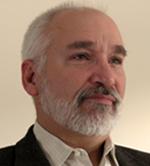
MONTGOMERY CHILDS
SAFIRE Project Update
Building on the past year of experimentation and analysis, the SAFIRE Project is moving into Phase 2, which takes the lessons from the Phase 1 Proof of Concept Prototype into a much larger chamber. Phase 1 ended on a cliff-hanger with indications of fusion and transient million-fold CME-like eruptions. Monty will present some aspects of the new chamber design, and also explain some of the equally challenging tasks of building SAFIRE Phase 2.
Monty is the author of three college engineering text books and holds eight international technical patents. He was lead design engineer of the Canadian National Research Council for Rocket Design to measure for oxygen in the upper atmosphere. He is now the Lead Scientist and Program Manager for the SAFIRE Project.
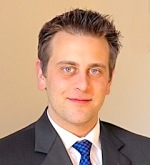
BEN DAVIDSON, JD
The Path Forward is Clear
From an obscure and outlandish idea has come the driving force behind much of the discovery in modern science. Electricity, electromagnetism, electrostatic forces – these are the under appreciated elements of our universe, underpinning the interactions and phenomena we are yet to fully understand. Puzzling observations that confound modern understanding all point a keen observer down those same lines of investigation. How will the electric universe break the glass ceiling? Ben will discuss ideas about the path forward from his vantage point as the founder of the Suspicious0bservers collective.
Ben Davidson JD is the founder of Space Weather News and The Mobile Observatory Project. He hosts the world’s most-watched space weather news program, has more than 260,000 subscribers, and operates SpaceWeatherNews.com, Suspicious0bservers.org, MagneticReversal.org, and ObservatoryProject.com. He is the researcher behind the Suspicious0bserver channel on YouTube, a channel that has rocketed in under 4 years to tens of millions of views, and is Director of the Mobile Observatory Project. Ben was classically trained in law and legal research, before taking up independent research in diverse sciences. His online presence has been a constant source of data dissemination, inspiring public interest in a variety of scientific fields, including the ‘electric universe’ theories. Ben focuses on the daily solar environment and the electromagnetic interactions between the sun, earth, and the galaxy.
youtube.com/user/suspicious0bservers; suspicious0bservers.org
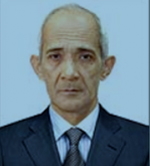
SUBHON IBADOV, PhD
Nature of Electric Comets: Electric Discharge Mechanism of Comet Outbursts and Thunderbolts/Lightning in Comet Nuclei Due to Solar Flares
Born in Tajikistan, Subhon Ibadov received his undergraduate degree in Physics from Moscow State University in 1966, followed by three years of post-graduate studies in the MSU Radio Physics Department. In 1970 Dr. Ibadov received a PhD in Physics-Math from MSU after which he became a Senior Scientist, Institute of Astrophysics, Tajikistan Academy of Sciences (IA TAS). From 1989 – 2005, he headed the Comets and Asteroids Department, IA TAS and is currently the Chief Scientist there. Dr. Ibadov is also the Coordinator of Scientific Cooperation between MSU and TAS. In addition, he is the author of almost 200 scientific papers on plasma physics, including plasma of hollow cathode electric discharge; physics of comets; high energy astrophysics: x-ray astronomy; extreme energetic phenomena in planetary atmospheres, including the 1908 Tunguska phenomenon; solar and stellar flares as well as the book, Physical Processes in Comets and Related Objects, Moscow, COSMOSINFORM, 1996, 181 p. http://istina.msu.ru/profile/Ibadov_Subhon/
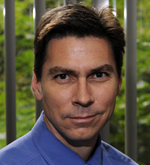
TOM WILSON, PhD
Ptolemy, Belief Systems, and Other Dark Matters
Tom Wilson will examine the geocentric Ptolemaic system as a case study for the dynamics of belief systems and certainty, and will also analyze some interesting philosophical parallels between the old and the new, Ptolemy and Gravity, quintessence and dark matter. For well over 1000 years, the Ptolemaic cosmological system held sway as the consensus model in scientific thought. This sophisticated cosmological theory was able to match observations and predict planetary and stellar movements within the limits of the subsequent one thousand years of observation. By the 1600s, the new heliocentric model begin to erode the long-held certainty about geocentrism. Interestingly, it was largely the advent of the laws of universal gravitation and Newton’s mathematical formalism that dealt the greatest blow to the amazingly successful Ptolemaic system. Even so, surveys performed as recently as the last decade reveal that 15% to 20% of the population retain a certainty that the sun orbits the earth. Meanwhile our gravitationally dominated view of the cosmos is enjoying its age of certainty. Ironically, models based on a gravity-only perspective has yielded complicated galaxy formation models with thousands of dark matter halos and “subhalos” that bear an eerie resemblance to the celestial and planetary spheres in the Aristotelian system.
Tom Wilson has a PhD in plant physiology but has worked in the semiconductor industry for the last 20 years. He was born and raised in Canada but now resides in the UK. He is the voice behind the successful Thunderbolts Project YouTube Channel series “What If? Asking the Dangerous Questions.”
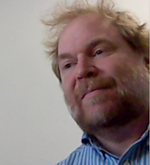
MICHAEL CLARAGE, PhD
SAFIRE as Astrophysical Laboratory
The SAFIRE chamber is a tool to understand how electricity manifests in solar systems. Sometimes we will start with something observed in nature, “out there”, then see if we can replicate that in the chamber. At other times we will take what we are seeing in the chamber to guide us in reinterpreting the wealth of data that is coming back to us from satellites looking at the sky. In his previous talks about SAFIRE, Dr. Clarage has spoken about using the SAFIRE chamber to replicate something in Nature, on the Sun, on a comet. In this talk, he will look at the other side of that coin, and ask, if we know something about how electric discharges behave in the lab, can we take that knowledge and look for the same thing going on up there in the sky?
Michael received his PhD in physics from Brandeis University, studying the biological and statistical behavior of proteins. He spent several years studying binary pulsars at the Arecibo radio telescope. He has lectured on discoveries in the areas of fractional calculus, fractals, and chaotic systems. His lectures have shown many news ways to understand relativity and dimensions, metaphysics in biology, and transformation in supernova. Dr. Clarage is currently a lead scientist with the SAFIRE Project but also is a favorite speaker on Space News from the Electric Universe.
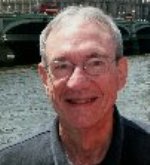
Cj RANSOM, PhD
Exotic Models
Mainstream scientists have investigated mythological information as data for over 300 years. They have created exotic models about the recent history of the solar system, except perhaps between 1950 to 1969, that address the massive amounts of data indicating the ancients saw a different sky. Those mainstream researchers suggested, as we do, that ancient stories are basically explainable by natural causes. What is additionally important is that they have postulated a number of non-uniformitarian causes and activities needed for the most exotic models. This presentation contains information about the history of exotic models and some of the most recent potential causes indicating that those or other catastrophic models about the recent history of the Solar System are worth additional investigation.
Dr. C.J. Ransom received his PhD in Plasma Physics from The University of Texas at Austin. He joined an engineering group at General Dynamics in Fort Worth, Texas and developed electro-optics equipment, infrared (IR) detection devices and simulated infrared (IR) guided missiles using analog and digital methods. He also developed non-destructing testing techniques for crack detection in aerospace vehicles. This included IR, ultrasonic and magnetic techniques. Dr. Ransom later joined Bell Helicopter where he managed a technical computing group. He also directed the Department of Defense’s Continuous Acquisition and Life-cycle Support (CALS) program for Textron, the parent company of Bell Helicopter. Dr. Ransom taught graduate software testing in the Texas Christian University Computer Science Department. He was on the committee that developed a software engineering graduate program at Southern Methodist University. After retiring, Dr. Ransom founded Vemasat Research Institute. Since its origin in 2004, Vemasat personnel have published a number of papers. The work is mainly concerned
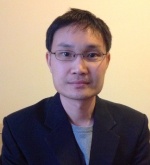
KONGPOP U-YEN, PhD
A Natural Disaster Forecasting Technique Based on Space Weather Data
A natural disaster forecasting technique will be presented. It is based on the understanding of physical and electrical interactions between Earth and its surrounding space. Using this technique, natural disasters, e.g., earthquakes, volcanic eruptions and storm formations, can be forecasted. Several practical case studies will be presented to verify this theory.
Kongpop U-yen obtained his PhD degree in Electrical Engineering from Georgia Institute of Technology. As an electric universe enthusiast, he has conducted an independent research on topics related to space weather and solar activities predictions.
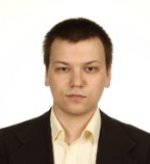
EUGENE BAGASHOV
‘Elec-centricities’ of Cometary Orbits
The electric comet is one of the key areas of the scope of Electric Universe ideas that might have significant impact on science. In order to develop the theory further, there is a need to study various parameters of the cometary population of the Solar System. What is the difference between comets and asteroids? What is the nature of “active asteroids”? What is the probability of a small body with given orbital parameters to be a comet? The basic idea is that the high eccentricity of the orbit makes the interaction with the electric field of the solar wind easier as the body passes through areas with different electromagnetic environment along its orbital path. Thus, with growing eccentricity, the number of comets should increase. Indeed that is the case. Yet it is not so simple, and the dependence is nonlinear. In his talk Eugene Bagashov will report one recent finding concerning the eccentricities of cometary orbits that might be an indication on the validity of the electric comet hypothesis and provide a basis for further research in this area.
Eugene Bagashov is from Minsk, Belarus. Currently, he works at the Joint Institute for Power and Nuclear Research – Sosny (one of the institutes of the National Academy of Sciences of Belarus) and doing his PhD research there in particle physics, quantum field theory and quantum chromodynamics (QCD). Eugene has published several papers and also have an EU-related blog (in Russian) with 800 subscribers in a social network vk.com: https://vk.com/electricearth
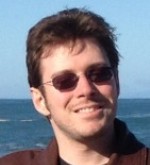
ALEXANDER FOURNIER
Electricity of Life
There is a truly staggering complexity to reality. Yet the case can also be made for a fresh view of organic lifeforms that is in some ways elegantly simple. Learn to see organic life with new eyes. Through a ground-up view of lifeforms that emphasizes their electrical organizing physics and their relationship to this planet, we adjust our paradigm of existence to be more cohesive. We also innovate our approach to curing a cellular disorder that members of our species in English-speaking culture have termed “cancer.”
Alexander Fournier graduated from John F. Kennedy University with a Masters in Integral Psychology, which focuses on outgrowing degrees of bias and studying the psychosocial development of human systems. He values sharing important scientific discourse with a wider audience, without sacrificing its accuracy when attempting to translate it into more common vernacular. Alex is the producer and narrator for “The Electricity of Life” video series on The Thunderbolts Project YouTube Channel.
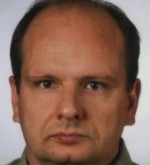
ANDREAS OTTE
An Extended Tool Set for the EU Geologist
The Electric Universe paradigm opens up promising new approaches in the field of geology. Drawing upon a larger, more interdisciplinary toolkit, it addresses old issues in new ways. It accounts for heat and pressure without having to envision the burial of material deep in the earth. It envisions excavation of surfaces far more rapidly than is allowed by today’s popular concepts of uniform erosion across geological ages. In a single stroke, the electrical perspective explains gaping chasms and massive deposition of alien material. This overview will support the new approach with explicit evidence from the field, including observations gathered by the late Michael Steinbacher and his team.
Andreas Otte has a Masters degree in Computer Science and specializes in designing and implementing applications based on Oracle technologies for a small IT company in Paderborn, Germany. His interest in chronology, catastrophism and the Electric Universe started in 2000 after stumbling upon references to the works of Immanuel Velikovsky. From there it was a small step to discover the works of David Talbott, Wal Thornhill, Herbert Illig, Gunnar Heinsohn and many others. Meeting Michael Steinbacher at the 2011 NPA conference opened up another field of interest as the question of how the theory of the Electric Universe might change our thinking about earth’s geology came into focus.
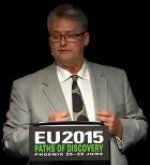
BRUCE LEYBOURNE
Geometry of Earth’s Endogenous Electrical Energy: Geophysical Evidence
Bruce Leybourne’s presentation will examine the geometries of Earth’s electrical stellar transformer circuits. Both statistical data and geometric correlations suggest geophysical relationships between lightning and earthquakes. The basic “Delta-Y” electrical circuit geometry of the tetrahedron “fire element” is expanded to a little known geometric form that unifies the five Platonic solids. The unique example of a diminished trigonal trapezohedron can provide a simplified roadmap to electric influences on earth from space, with implications for our understanding of inline/collapsed vortex relationships of energy flow in living organisms. The surprising conclusion is that the same specialized geometry applies to both the human heart and the clockwork geo-plasma physics of co-rotating double layer phenomenon so essential to Electric Universe models.
Bruce has a Masters degree in Geology from University of Southern Mississippi. He is a Registered Professional Geologist and is currently Research Director of Institute for Advanced Studies in Climate Change (IASCC), while also working with Geostream Consulting LLC and Climate-Stat Inc. to improve geophysical-weather models. Bruce has spoken at many international conferences on the topic of geophysics and climate, authored and co-authored many papers, and is currently organizing a book to share his views on the nature of climate change. In addition, he has spent 10 years offshore performing gravity and magnetic survey work onboard seismic exploration vessels, in addition to seafloor mapping, oceanography, and geophysics with the Naval Oceanographic Office.
http://www.iascc.org/
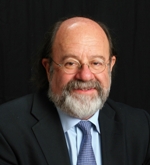
GARY SCHWARTZ, PhD
Is the Universe Organized? An Elegantly Simple Methodology applied to the Hubble Ultra Deep Field Image
One of the most seminal, time consuming, and expensive images ever obtained in the history of science is the termed the Hubble Ultra Deep Field (HUDF) image. The Hubble Telescope was pointed to a dark region in space from September 24, 2003 to January 16, 2004. Two exposures were taken per orbit for a total of 400 orbits. The 800 exposures amounted to about 1 million seconds, or 11.3 continuous days of viewing time. The average exposure time was 21 minutes. The combined image – taken by Hubble’s Advanced Camera for Surveys (ACS) and the Near Infrared Camera and Multi-object Spectrometer (NICMOS) revealed approximately 10,000 galaxies. Inspecting the image visually does not reveal any obvious structure, cluster, or organization of the thousands of galaxies uncovered. However, using a relatively simply statistical analytic technique developed by the authors, evidence for hidden structure in the image is clearly obtained. The general findings were replicated with Galactic Cluster ICDS 1426. Given the huge volume of galaxies contained in the image, it is possible that an ultra-cluster of galaxies may have been discovered herein.
Dr. Gary Schwartz is a professor of psychology, medicine, neurology, psychiatry and surgery at the University of Arizona and director of its Laboratory for Advances in Consciousness and Health. He is also Chairman of Eternea (www.eternea.org). He received his doctorate from Harvard University and has served as professor of psychology and psychiatry at Yale University, director of the Yale Psychophysiology Center and co-director of the Yale Behavioral Clinic.
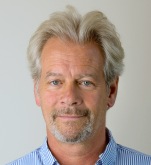
EV COCHRANE
Turquoise Skies: Echoes of Creation
Ev Cochrane will offer a systematic analysis of the earliest pictographs of ancient Egypt and Mesoamerica in order to document a universal tradition of a “green” or turquoise-colored sun in former times. The evidence will show that the Turquoise Sun stood at the very heart of ancient accounts of Creation. If such traditions have a basis in reality, it stands to reason that modern understandings of the solar system’s recent history are seriously flawed and outdated.
Ev is the author of numerous articles and books arguing the case for recent planetary catastrophes. A graduate of Iowa State University, he earned an M.S. in genetics, 1982. Ev is the author of Martian Metamorphoses (1997); The Many Faces of Venus (2001); Starf*cker (2006); and On Fossil Gods and Forgotten Worlds (2010). He is currently working on major monographs on astral religion in Ancient Egypt, the Greek myth of Phaethon, and myths of Creation.
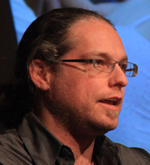
CHRIS REEVE
Part 1: What We Failed to Learn from the Moonshot
It has become common for Americans to point to the Moonshot as our greatest cultural achievement. Yet, 40 years later, the nature and pace of innovation has changed. What was it about this event that we’ve struggled to replicate since? We can use one overlooked answer to get big things done again.
Part 2: Controversy-First Science Instruction
In high school and college literature classes the world over, students are encouraged to interpret texts from different perspectives. The practice acclimates students to a world of competing worldviews; it normalizes the existence of multiple meanings within a single observation; and it can help students to think more critically about their own reactions. Can we do something similar in science education?
Chris has Bachelor of Science Degree in Electrical and Computer Engineering from Carnegie Mellon University and has spent thousands of hours discussing the Electric Universe on a number of scientific and other forums.
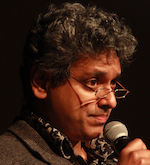
AP DAVID, PhD
Remembering Homer, Literally: The Shield of Achilles
The Shield of Achilles is one of the most celebrated poetic artifacts ever created. Very likely the polished metal of the shield made by Hephaestus for Achilles is the original for what Plato, and Hamlet after him, called the ‘mirror held up to nature.’ The cosmos of stars and sky frames the animate depictions of the human scene engraved in the center. Herodotus believes that Homer, faced with a choice between what actually happened and a more poetic alternative, would always choose the latter. But there is also a bond of verisimilitude, a kind of contract between poet and audience, that helps give legitimacy to the frame of his story. Real frogs are placed in an imaginary garden. Well, there can be no grander, more common, or more universal frame for those who dwell on the earth than the stars and the sky. More than likely, a poet will get these things right, if only to win faith in his more outrageous depictions. Hence with a little sleuthing, a cosmologist can extract a picture of the Homeric sky, shared by poet and audience, even if he has no interest in the poetry, and remains deaf to its beauty. A P David makes these inferences in an attempt to bridge Homer’s poetry and cosmology. Some surprising and specific results about the appearance of the sky must now be taken into account, if one is to take seriously an Homeric world existent in time, containing not just a fantastical poet but an audience who shared with him this view of a single sky, the great O of the globe.
Dr. A.P. David is a classical scholar (Hellenist), who has published two academic works including The Dance of the Muses: Choral Theory and Ancient Greek Poetics, Plato’s New Measure: The ‘Indeterminate Dyad’ and self-published several works of fiction and poetry.
danceofthemuses.org
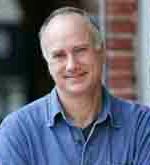
DAVID NOVAK
David Novak will be the Master of Ceremony. He is a performance storyteller and arts educator and creator of The Storytellers’ Compass, a method of narrative wayfinding. He has spoken at numerous theatres and festivals all over the country. In addition, his aesthetic education programs have found audiences across the country. Mr. Novak has been guest instructor for the University of San Diego, International Storytelling Institute, Oklahoma Arts Institute, John Campbell Folk School, and Walt Disney Imagineering. In 1995/96, David was Master Storyteller for the Disney Institute in Orlando, Florida. Internationally he has toured China, New Zealand, Hong Kong, and the Czech Republic. He is currently an instructor for the graduate storytelling program at Eastern Tennessee State University and Performance Review Editor for the journal Storytelling, Self, and Society.
Disclaimer: The list of speaker topics above does not imply endorsement by The Thunderbolts ProjectTM or T-Bolts Group Inc. Progress in science comes first and foremost from critical minds. It is therefore reasonable to give periodic attention to ideas beyond our published themes, even if we are not ready to endorse them.





